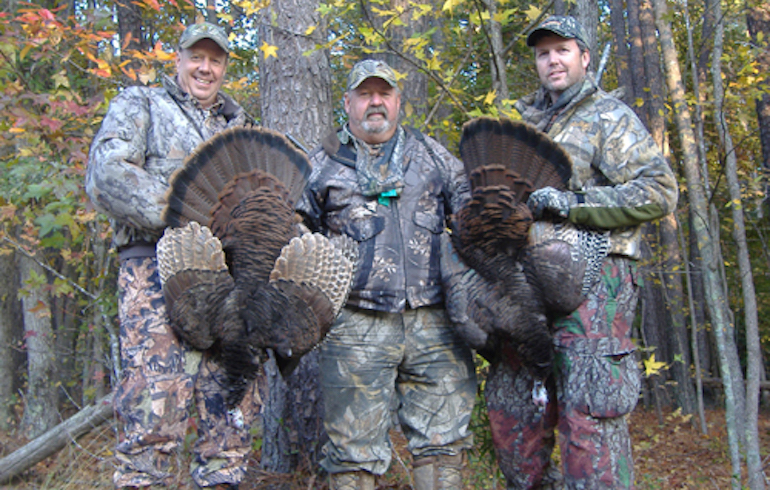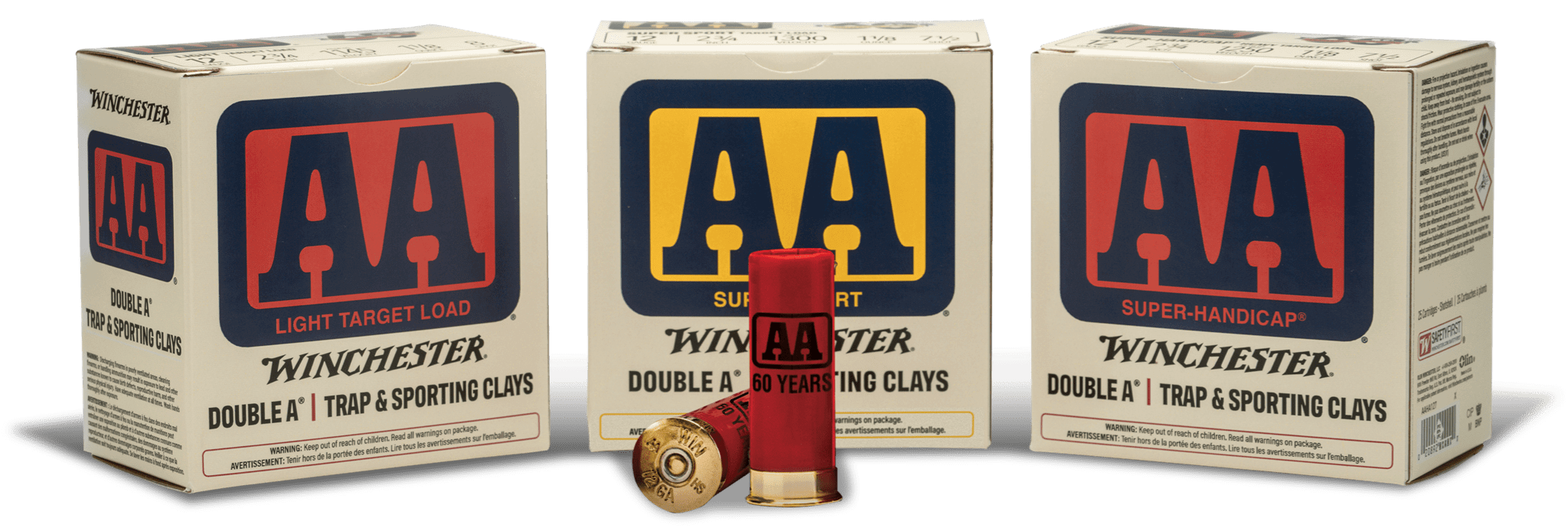Fall Turkey Hunting – Tips & Tactics
Although turkey hunting today is most associated with the warmer weather of spring, sportsmen who count themselves among this select group, have the added benefit of pursuing their game in the fall as well.
In fact, more than 40 states permit some sort of either sex turkey hunting in the fall and winter providing abundant opportunity across much of the wild turkeys’ nationwide range. Winchester makes a host of great turkey loads for today’s big bird hunter, so grab yourself a box, load the shotgun and get into the autumn woods. Not only is it a beautiful time to hunt, but with more turkey hunters focused on spring (or at this time of year, deer) the fall turkey hunter can find himself in the midst of hunting a lot of unpressured birds. Here are some tips to ensure you foray this autumn is productive and fun.

Ready! Break!
Turkeys are not the solitary, sex-driven creatures this time of year they tend to be in the spring. Food and the desire to flock together with their kind in search of that food is where their focus lies. So the name of the game in fall turkey hunting is to locate a flock and bust it up, scattering birds in every direction so you can then call them back to the gun.
To do this, get to the woods before sun-up if possible to listen for birds. Listen closely for the sound of wings flapping and striking limbs as turkeys clumsily drop from the roost as well as the initial tree calls of birds scattered among the tree tops. Young flocks will tend to loudly yelp, cutt and kee-kee as they hit the ground and work to regroup before moving on to feed. If you hear birds, move quickly to that area.
Should you strike out on pinpointing a first-light flock, patrol the woods as you listen for the sound of clucks and yelps as well as the din of scratching in the leaves. A dozen or more birds moving and scratching in leaves can sound like a group of tourists tromping through the forest. It doesn’t hurt to stop every 100 yards or so and throw out some plaintive yelps and kee-kees as this can often elicit a response from a real turkey.
Upon locating a flock, now it’s time to bust the flock up and get them to scatter apart from each other. Ideally, you want turkeys to fly in every direction. To get a good break, most hunters will simply run at the turkeys catching them by surprise and scaring them in all directions. Other hunters like to sneak close and shoot their gun in the air. Never run with a loaded shotgun as this can be extremely dangerous, especially when in the woods with other hunters. Be sure the turkeys fly in every direction. If they all go the same way, mark the direction they went and attempt another break. A lot of hunters at this time of year like to hunt with turkey dogs as well, which are naturally faster than humans and can provide the best break up of all.
Calling Them Back
Flocks of young birds will call back more quickly, and often more easily, than all-male flocks of gobblers and older jakes, as the young birds are often eager to get back with the other birds. Mature gobblers on the other hand can take an entire day to call in. Better be patient when working mature gobblers in the fall. Hunting these birds can be one of the biggest challenges in hunting and they often respond with little more calling than a few deep, plaintiff clucks.
Young birds can actually be more fun to work at this time of year as they tend to be extremely vocal on the call back and come together more quickly, sometimes trying to reorganize in as little as 20 or 30 minutes after being scattered.
The key to calling turkeys to you in the fall is to set up at the exact point from where the birds scattered. This is the point to which they will all want to work as they attempt to regroup.
When working young flocks, begin with yelps, a few cutts and some kee-kees building up in intensity as if you are urgently trying to rejoin the flock yourself. As soon as a bird responds, match their calls note for note. For gobblers, stick to deep, slow yelps and the occasional gobbler cluck.
Keep still as birds come in and have your gun up and ready. It’s not uncommon for multiple birds to approach at the same time, so be careful when you pick your shot so that you only hit the bird at which you are aiming.
While any load used to hunt turkeys in the spring will do, trees and brush are loosing leaves and the woods are coming more open by the day. More visibility means incoming turkeys might be able to spot you from further away. For that reason, choose a load that gives you a slight edge on longer range shots, such as Winchester’s Long Beard XR, or perhaps even heavier loads of No. 4s from Winchester’s Double X copper-plated hard shot or Xtended Range Hi-Density lead-free shot lines. These heavier loads will carry more punch downrange and with the woods more open, fewer pellets are needed to swarm a shooting lane that at other times of the year might have been more choked with leaves and brush.




